What I am going to explain next can be done with the rigour of physics formulas and explanatory graphs, but I prefer to do it in everyday language, something that anyone can understand, even if they have never touched a physics book in their life. I start with the obvious, a car is a body made of matter, and therefore subject to the laws of the universe, such as gravity.
Before we go on, let's take a look at the photo above. What do these cars evoke at a glance? They are robust, strong, imposing, safe... aren't they? Now, please take a look at the bottom picture. It's a Formula 1, and it's at the very antipodes of what an off-roader is. A Formula 1 car is a car designed for top performance, for the premier class, and while it's not the fastest car in the world in a straight line, it's certainly hard to beat its performance on a track.
NOTE: The Mitsubishi Montero is not an SUV, but an off-roader, but in terms of design it is what an SUV wants to be.
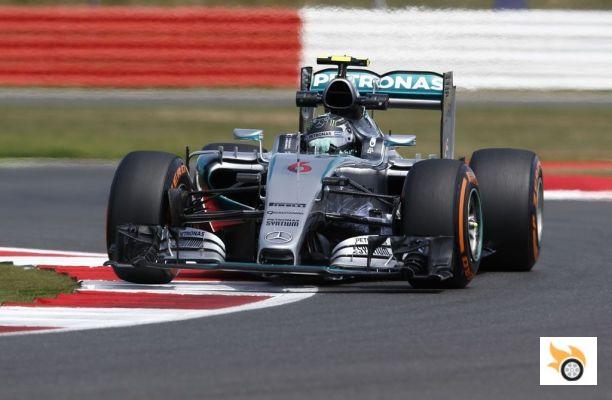
Let's see what the differences are, beyond the obvious. The Formula 1 is low to the ground, the SUV is higher. In the Formula 1 the driver is very close to the ground, with his legs fully extended, while in the SUV the driver is practically seated, and in an elevated position. There is hardly any car above the wheels in the Formula 1, while in an SUV almost everything is above the wheels.
Now I ask a stupid question: does anyone think that a Formula 1 driver feels insecure because he is in such a low position?
The explanation for why racing cars tend to stick to the ground has to do with the center of gravity, which we can define -academically- as follows:
"The centre of gravity is the point, which can be considered, at which the total weight of an object acts" (Classical and Modern Physics, Getts Keller and Skove, Mc.Graw Hill).
The weight, in reality, is the gravitational force (it depends on the mass of two objects), which attracts the vehicle towards the center of the earth. The center of gravity is the imaginary point from which the downward force would "pull". Let's imagine a ball, the center of gravity coincides with the geometric center. In a car the centre of gravity does not necessarily coincide with the geometric centre, because it is not a uniform and symmetrical body.
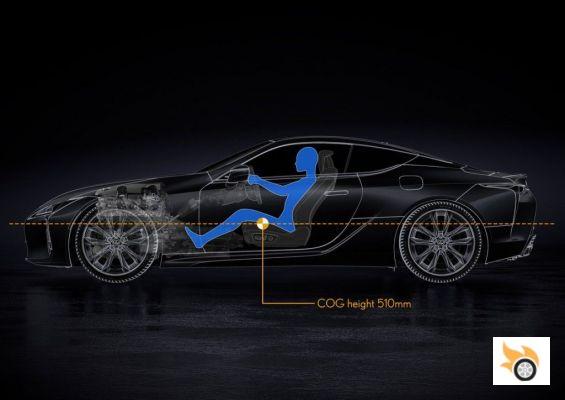
In a car we have different materials, of different densities and nature. More or less it is usually close to the driver, and in the sportiest cars that exist, it is much closer. The higher the height of the car, the higher its centre of gravity. Depending on the placement of the engine, the centre of gravity may be further forward, as in front-wheel drive models, as the front axle carries more weight than the rear. Rear-wheel drive ideally has a symmetrical split, 50/50, or as close as possible.
The lower the center of gravity, the better the car will corner, the faster it can enter, and the less it will tend to understeer. Similarly, the higher the centre of gravity, the more the car will tend to run off the road. This tendency can be disguised or disguised, but it is unavoidable.
Manufacturers often resort to various wildcards to disguise the impact of a high centre of gravity, which is why suspensions must be firmer and tyres have a low profile (too little rubber in relation to the rim). In a straight line SUVs do look very comfortable and isolate from the road, but the suspension is stiffer than it may seem.
Pure" SUVs have a suspension focused on off-road efficiency. That means they allow for more roll, as the wheels will be going over very uneven surfaces, but they don't have to break passengers' spines because of it. The damping is softer and the vertical travel of the wheels is greater. That's why the road handling of these cars is so bad.
"SUVs have high ground clearance and a narrower track in relation to the height at which, by construction, their centre of gravity is set. This height of their centre of gravity increases roll torque and limits corner entry and exit speeds. Smoothness is the necessary premise for driving an off-road vehicle, avoiding abrupt manoeuvres" (Automobile Manual, Manuel Arias-Paz, Cie Dossat).
Oh, what did we just read, that the higher the centre of gravity, the greater the possibility of rolling over? Well, it's as true as it sounds. I quote from one of the reference books so that no one thinks this is a sectarian comment of mine. That's why crash tests in the US include a test that isn't done in Europe: the ability to resist rollover.
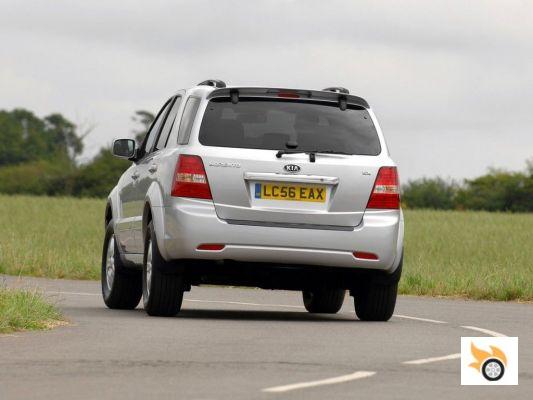
SUVs, as they are mainly used on the road, have the suspension more like a passenger car, but stiffened. So body roll is not as pronounced as it should be, at the cost of sacrificing cornering comfort. Even if a monkey dresses in silk, she stays a monkey. As SUVs want to look like off-roaders, but be like cars, they are neither good off-roaders nor good cars. They're somewhere in between.
Anyone who has driven an SUV and an SUV of similar weight will have seen an astronomical difference. I'm going to make an absurd comparison, like putting a first generation Kia Sorento 2.5 CRDi on one side, and a Porsche Cayenne S Hybrid on the other. Aside from the nonsense, the Porsche is 200 kilos heavier than the Kia, and that's more than two tonnes. Incidentally, the Sorento was an early SUV, more SUV-like in any sense, while the Cayenne is a modern one, more passenger car-like.
I drove the Kia first, then the Porsche. Truth be told, I have to admit that the Cayenne went surprisingly well for how heavy and big it is, and that trying to do the same with the Sorento I would have flipped several times, or invaded the oncoming lane as a more harmless consequence. There's a huge mechanical difference between the two, and the Germans' handiwork shows. However, if I tried to follow the same pace with a Cayenne as I would with a 911, I'd also flip over or nose-dive into the oncoming lane. And in all honesty, the Sorento off-road is much better than the Cayenne.
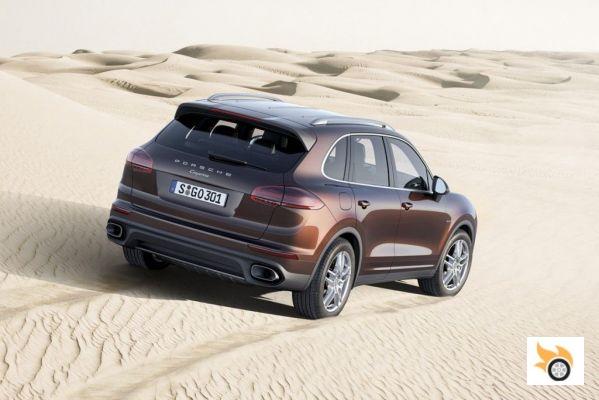
I hope by now we've all understood that the worst way to distribute weight and design a car is to make it tall and heavy, i.e. an SUV. To hide that design flaw, the suspension, brakes and tyres have to work harder than normal, and that means more expensive maintenance, both corrective and preventive.
Let's continue with physics. Every body in motion contains an energy associated with its speed and mass, the kinetic energy. The crude way to describe the formula is: half the mass multiplied by the square of the speed. A heavier car has more kinetic energy than a lighter car, at equal speed.
Let's assume a motorway with everyone driving at 120 km/h and keeping a safety distance of 50 metres. There are cars, SUVs and off-road vehicles in the traffic. Suddenly the traffic stops and everyone brakes hard. With tyres in perfect condition and in optimum grip, some cars will avoid the collision by centimetres, others will break bumpers, and SUVs and off-roaders will ram the preceding vehicles with an almost certain death of the occupants.
Kinetic energy is what it is, it has to be released, and whatever the car is not able to cushion with its programmed deformation structures, will become killer energy that will do a lot of damage -or kill- the occupants. The more kinetic energy, the greater the violence of an accident. Hence the salutary advice not to race, and not to drive an unnecessarily heavy car.
But nothing, just keep thinking that an SUV is safer and that's all.
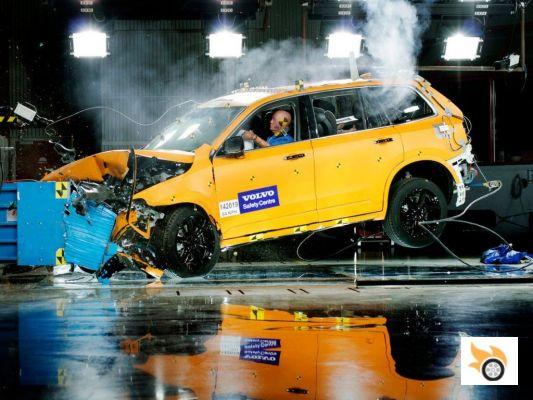
From the above story we have to keep in mind that tall and heavy cars need more meters to brake than conventional cars. Do we see drivers of tall and heavy cars leaving more safety distance than drivers of passenger cars? No. And they should, for their own sake, but above all for the sake of others.
Manufacturers make up for the problem with wider tyres, which also have a low profile. Add to this the weight factor. So we have very reinforced tyres that are more expensive to produce, which the top brand manufacturers do very well. Now let's imagine a tall, heavy car with replacement tyres from brands of dubious reputation because they don't want to pay the crazy price of the original wheels.
When the first Porsche Cayenne S came out, the German brand couldn't find any tyres on the market capable of handling so much power and weight with an adequate result, so they asked Michelin for custom-made tyres. Out of that came the Michelin Diamaris, which those who have suffered the pain of changing them will know all too well from the price.
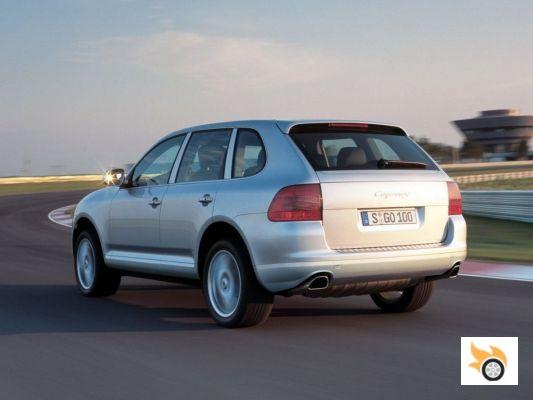
"We've used the same tread compound strategy as on the Michelin Pilot Sport 2s that will equip the future [Porsche] Carrera GT. The result is unprecedented performance and capabilities in an SUV tire." Tom Chubb, vice president of marketing, Michelin Automotive Industry (2003) - Source: IGN
Recall that the Cayenne was once the fastest SUV in the world. In other words, Michelin used dedicated compounds on its best road tires at the time, and the Carrera GT is one of the fastest cars in the world, with over 500 hp of power. As more than a few people can understand, the Michelin Diamaris were not the best tyres for off-road driving.
Whenever we see a big SUV with worn out tires, or with Chinese brand tires, it would be our duty as citizens to report the owner and have him thrown in jail and his car put in storage. That would really do a favor to collective road safety, rather than giving fines at 124 km / h on highways and freeways. But the law is the law, and they can only be reported for driving with less than 1.6 mm of tread depth, or with tyres that wouldn't pass the MOT.
I love the video above, it was recorded with a dash cam in South Africa. In it, we can see a Volkswagen Polo being harassed by an asshole driving a BMW X5 (the latter is circumstantial, as if he's in a Tata Grand Safari), and the latter tries to run the former off the road, who knows why. Before you read on, watch it to the end.
Let's move on. The driver of the Volkswagen Polo had little trouble changing lanes in one swerve, while the brand new BMW was unable to withstand such an overdose of dynamic forces, and the tyres couldn't prevent the inevitable. It's a good thing it didn't go into the oncoming lane, especially for the sake of the innocent people on the road.
Let's recap: Who has the lowest centre of gravity? The Polo. Who has the best dynamics? The Polo. Who stands to lose in an accident? Well, that's relative. You know that in certain environments, like in boxing, it's not the same to give as to receive. I guess everyone has understood me. Some people think they are invulnerable driving a big, heavy car, and that the more sheet metal the better. That brings us to the next video:
The video has shown us, once again, that it's not always the one with the biggest and fattest (I mean sheet metal) that hits the hardest. The modern Malibu resists the impact of the old Bel Air much better. The occupants of the modern car will go home with more or less serious injuries, those of the old car will go home in plastic bags, straight to the morgue, or at least to the ICU.
Now let's talk about visibility. In an SUV you feel safer because you have a higher driving position and can see your surroundings better, and "most importantly", the nose of the car. Very well, those of us who have a standard height car get screwed when we have an SUV in front of us, because it obstructs our visibility. There are cars that, without being Formula 1, have their roof flush with the height of the mirrors of some SUVs. It's very difficult to reconcile that for practical purposes.
I've driven cars of all sizes, at calm, tense and even "suicidal" rhythms, and I've always felt more insecure and uncomfortable driving tall, big, heavy cars, or all at the same time. In a straight line, though, it's a great feeling. In the US they've thought that way for years, cars that go well in a straight line, but now they've come to their senses and are doing like the Europeans and Asians. The "big horse, whether it walks or not" thing isn't so much in force anymore.

Some SUVs incorporate all kinds of modern advances, like cameras and radars that make them brake on their own, night vision, 360-degree vision (helicopter type), air suspension, and the pot calling the kettle black. None of that is going to get rid of the reality: they are much worse cars from a dynamic point of view: they brake worse, roll over sooner, are more unstable and need more expensive components to move with a minimum of dignity.
I know that not all drivers go around corners like some of us do, and they prefer the peace of mind of driving on the motorway at a pace that won't cost them points, and even below the legal limits. I'm happy for them, but there are always situations in which the dynamics of the car is put to the limit, sometimes by the fault of third parties, sometimes by our mistake, and the difference between a well designed car and a poorly designed car can be a scare or a hospital.
For all the reasons listed above, I would never buy a car like that in my fucking life, and even less if I have to carry the most important people in the world in it, such as my wife and children. On days when I want to keep my ass off the road, or my back hurts - I have a chronic injury and two crushed vertebrae - I raise the seat a few inches, but the car keeps the center of gravity where it needs to be, as low as possible.
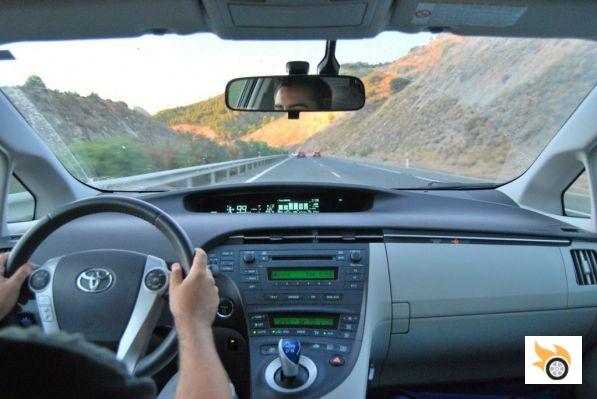
In fact, the first few days of my injury, which was practicing a sport I should never have tried - canyoning - I raised the Prius seat as high as it would go, and it felt like I was driving a van. When I felt better, I put it all the way down, and suddenly my Prius looked like it had been touched by TRD or a prestigious tuner. But the car was exactly the same.
By the way, I don't see the hood of my car, nor do I need to. That's what parking sensors are for, or know how to calculate.
That brings me to the driving position. The higher the driver goes, the less he feels the road, the worse he reads the reactions of the car, and the more he will feel scared in a sharp curve or a bad driving situation. Maybe in the city the psychological sensation prevails over reason, but on the road the seat should be as low as possible. In the safe and dynamic driving courses the instructors insist a lot on the subject, and they do it for a reason.
The safety that SUVs provide is illusory, it's a self-feeding delusional fantasy, or whatever you call it in psychology. Those drivers are naked emperors, they are not wearing an invisible suit, they are naked. And the worst thing is when this false security is added to the arrogance, and they think they have more right to use the road than others, incurring in dangerous behaviors like the South African asshole of a few lines above.
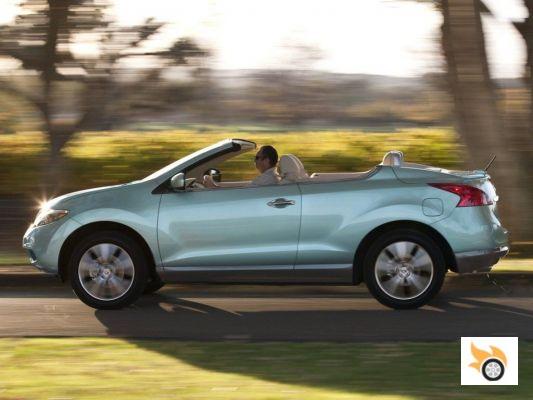
So, I hope it's clear that my inquisitiveness towards this kind of cars is fully justified, with rational objectives, and it's not an attack of envy that I get when I see people with more car and more money than me at a traffic light. There are some cases in which their purchase is justified, and is even recommended, but 25% of sales (that now) are far above the real needs of the staff.
These cars are sold for aesthetics, first and foremost, and then for any other reason. I quote a colleague, who summed up the concept masterfully in an article:
"Anyway, cars are bought static (in a shop) but used dynamically (on the road). Keep that in mind in the shop." David G. Artés, Source: Diariomotor.com
I'm more or less a burnout, but I suffer from back pain and I drive an "anti-car", and these underbordillos don't say anything to me. There are a few models that I find quite reasonable and less absurd, like the Mazda CX-5, but I'm sorry, I can't with most of them. As soon as I do a couple of corners with them I don't want to, if they sold them with standard physics violation, maybe I'd be the first one to have a Cayenne Turbo S parked in the street with bigger wheels and optional carbon ceramic brakes (in case I could afford it).
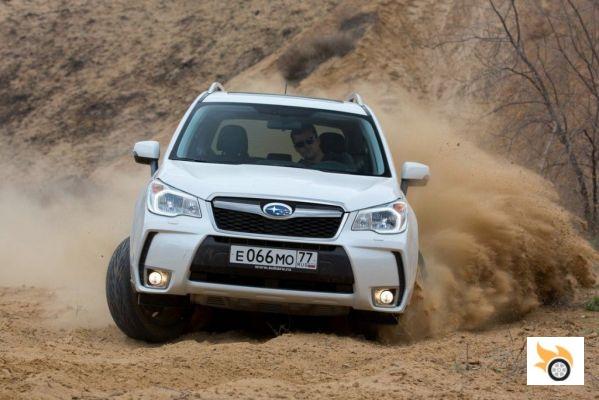
I curse the day EuroNCAP started giving the first five stars of protection to SUVs, because from then on the bar pundits started concluding that they were just as safe as five-star cars. Those academics with the pincho de tortilla and the classic Mahou forget that the ratings are valid within the same vehicle category, not across the board.
WHAM, right in the mouth!
Do all SUVs deserve my scorn equally? I have to admit that they don't. There is a world of difference between driving a front-wheel-drive, transverse-engine SUV and driving a Subaru Forester. The latter has a boxer engine, with a lower-than-normal centre of gravity, and on the road it gives a confidence behind the wheel that almost no similarly priced rival does.
The Forester is to SUVs what the Porsche 911 is to sports cars: a bad idea masterfully realised. With a boxer engine, symmetrical all-wheel drive system and a low centre of gravity, it performs impeccably for an SUV. Similarly, the 911, with its engine hanging behind the rear axle, is still one of the best sports cars on the planet, if the 911 also has a boxer engine!
With this Sesame Street-like video, I'll say goodbye. I know I'm not going to convince everyone, and I may not thwart the sale of any SUVs with my words, but I hope that at least it will awaken some people's consciences. I hope, at the very least, that those who drive an SUV or an off-roader (especially the latter) will start to think about it, and will finally realize that they are not driving a car, with all that that implies. Separate yourselves more from those in front of you, who have done nothing to you.
They are driving bad cars, disguised as SUVs. If the whole population suffers from back problems, what we need to do is to give more jobs to physiotherapists, who leave the country where they are paid properly. In crossovers, a subtype of SUV, the problem is less serious, since the dynamic difference is not so exaggerated, and they can even have reasonable consumption, even lower than the normal cars they have replaced. In that sense, mechanically they are not so absurd, even if they are still cars for posturing.
And that's another one... fuel consumption. The more surface area you have to face against the air, the more power you need, and the more energy you need. The faster, the worse. When diesel goes back above 1.40 euros/litre, and petrol above 1.50 euros/litre, many will regret their purchase, but now the short-termed see the ideal moment to burn their share of dinosaur juice. As pollution and the ozone layer are only a problem for the eco-freaks, let's spend with joy, after all, only our children and grandchildren are going to get screwed!
One day the people of the future will ask themselves what it was that bit those of us who lived in the first decades of the 21st century, when technology allowed us to make ever lighter and more austere cars, but we insisted on selling ever heavier, bigger and less austere cars like hot cakes by definition. They probably think we were complete morons, as we do with those industrial societies that burned coal like there was no tomorrow and had the same visibility as a standard Pekinese citizen, unless there were hurricane-force winds.

























